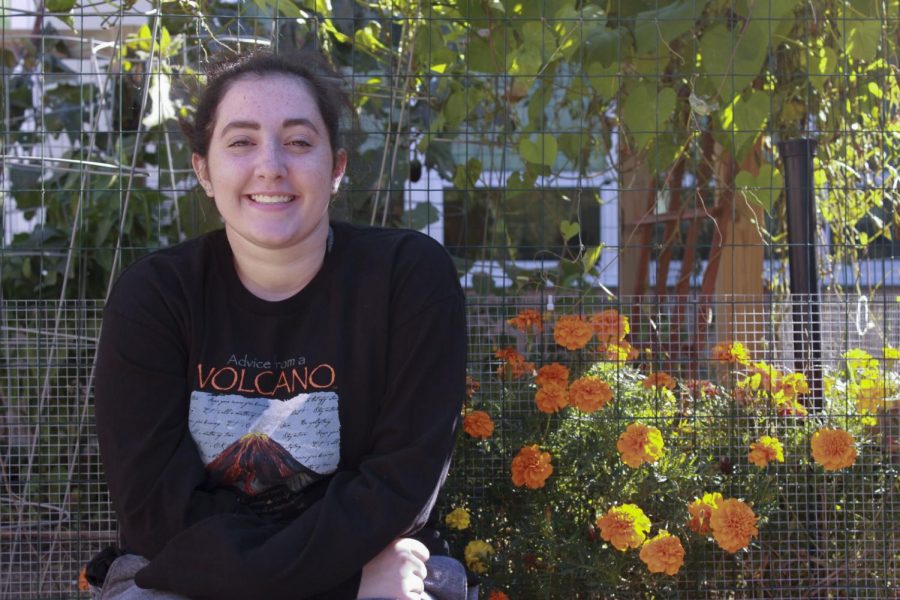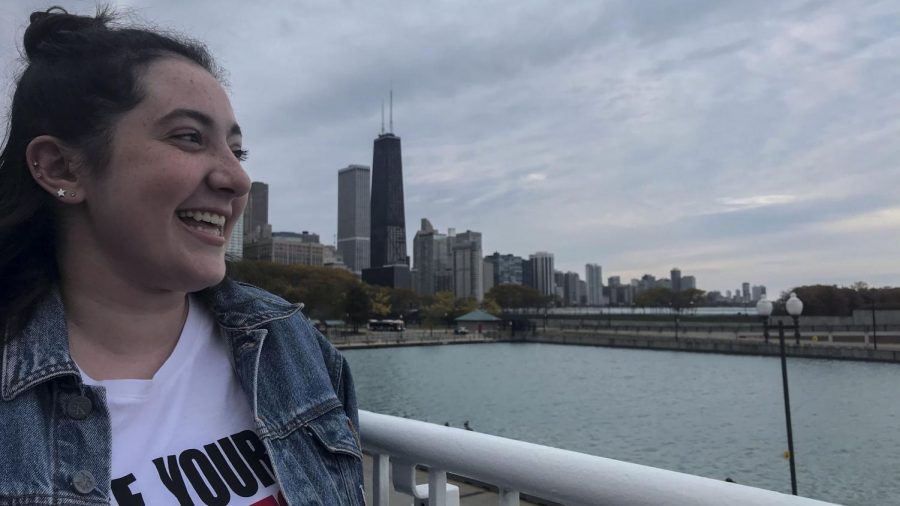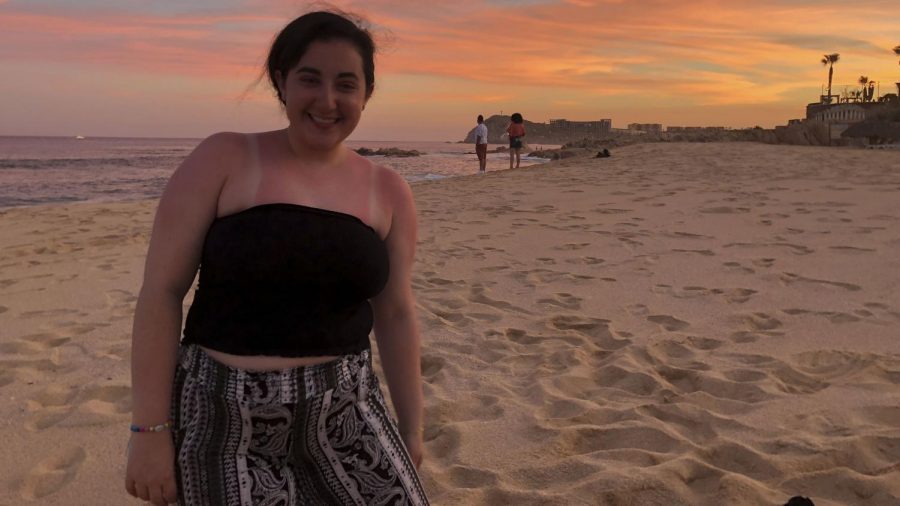Kayla’s Korner: My Story
March 7, 2019
‘I did not feel like myself’
A recount of a mental health story
Editor’s Note: Kayla’s Korner will be a reoccurring column that deals with mental health and teenage issues. This is also the first of an eight part story.
It was a Wednesday. June 13, 2018 to be exact.
I have been going to therapy every Wednesday for the last three years. This Wednesday, though, would be the hardest session for me. It was where I was going to tell my therapist exactly how I was feeling.
And how was I exactly feeling? I was feeling depressed. I was feeling hopeless. I was feeling like nothing mattered in the world anymore.
I did not know how I was going to say this to my therapist. I had not told anyone how I felt. I was scared and did not want people to think of me differently; although, I knew telling her was the right choice. It was coming down to where I did not trust myself anymore and did not know what I would do if I was alone.
The therapy session started off normally. We talked about what I had been doing over the past week and what was coming up the next week. Towards the end of our 45 minute session, I told my therapist that I had to tell her something. She looked at me weird, but nodded and waited for me to continue.
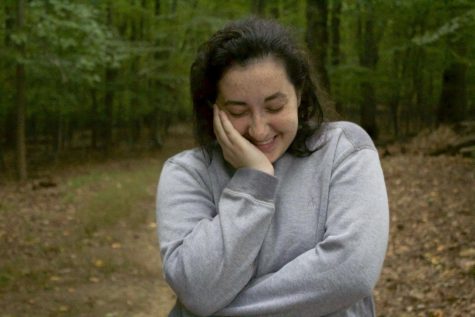
PV senior tells a personal story of what she endured over the summer. This is the first of an eight part story.
This is when I began to cry. Tears rolled down my face as I told her that I did not feel like myself. I felt sad, depressed even. I felt this all the time. I told her I did not want to be here anymore, that my life just did not feel worth living anymore.
She looked at me with concern and worry in her eyes. I had never really told her about my everyday sadness and the difficulty of getting up each day.
She told me the options of what I could do at the very moment. I could either go home or I could go to the hospital — her main concern was safety. She kept asking me, “Do you feel safe at home by yourself?”
My response was “No, I do not.”
It was then I decided that I was not going home that night. I was going to the hospital.
My mom was then called up to the office where she was told everything. I could not look at her. She was crying, not knowing what to do. She was mad at herself that she could not fix my sadness and pain. She was understanding, though, and knew that my therapist and I decided that going to the hospital was the best option.
My therapist then told my mom the steps that needed to be taken.
I said goodbye to my therapist once my mom and her were done talking. I would not see my therapist again for another two months.
And then my mom hugged me. She told me everything was going to be okay. We got into the car and then started on our way to the hospital.
Coming next Monday: Kayla shares her experience at the hospital.
‘I chose the inpatient facility’
A recount of a mental health story

Editor’s Note: Kayla’s Korner will be a reoccurring column that deals with mental health and teenage issues. This is the second of an eight part story.
I was a mess the whole way to the hospital. The ride was full of crying and muttering that I was sorry over and over again.
When we arrived at the children’s emergency room, there was a police officer that asked, “Are you admitting someone into the emergency room?”
My mom responded with “my daughter.” We then got out of the car and the police officer took the car to be parked.
We walked into the emergency room and checked in at the desk. They put a white hospital bracelet on my wrist that stated basic information about me, such as my name and birthdate. I could not stop shaking when I was in the waiting room. Eventually, a nurse called my mom and me into a room where she would ask me questions and take my vitals.
The first thing she asked me was “Were you raped?”
My immediate response was “No. I wasn’t.” I guess this was their protocol.
She then made a phone call, cancelling a nurse who was coming down if I was raped.
We then just talked about how I was feeling. After, I was transferred into a room in the emergency room where I changed into hospital clothes.
The thing that was weird about being on suicide watch in a hospital is that you are put into a room where the door is always open and there are rotating shifts of a nurse or a doctor that stays in the room and watches you.
I waited in the room for hours until I could meet with the hospital psychiatrist to see if I would be going home or to an inpatient facility.
There was nothing to do while we waited. The television was on, but there was no sound, so I just sat there, watching the screen and making up dialogue. The alternating nurse or doctor would try to make conversation with my mom and I, but I was not really in the mood to talk about the weather or about school.
Eventually, at around two in the morning, the hospital psychiatrist was available to talk to me. However, she was not actually there — she was on a large monitor on Skype.
I talked to her for about a half hour about what I was feeling and what I wanted to do.
In the end, she basically gave me a choice. Do you want to go home or go to an inpatient facility?
I chose the inpatient facility. It might seem weird like why would I want to not go home? It is hard for most people to understand, but I was feeling hopeless. I was feeling like if I went home that night that I would end everything right there.
I knew the best thing for me was to get away from my home and my family and to go to the facility to start to heal.
The psychiatrist was grateful of my choice. She knew that that was the best thing for me after only talking to me for a short period of time.
The monitor then left and the nurse or doctor came back into my room as my mom talked to the psychiatrist outside. My mom came back in crying after about 15 minutes.
I had to stay overnight in the hospital. In the middle of the night, I was moved into another room that had two rooms inside of it. One of them was mine and the other one had a girl around my age that was there for the same reason as me. Since there was two of us, there were two people watching us.
The next day was full of eating and taking naps until we figured out which inpatient facility I would be transported to. At one point, they did not even know if I would be able to go to one that day.
Finally, at around dinner time, I was told that I would be leaving shortly. An ambulance was coming to take me.
Coming next: Kayla leaves the hospital and goes to an inpatient facility.
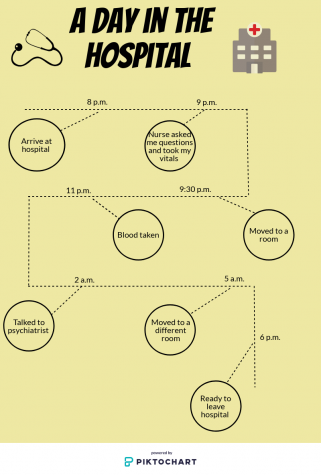
‘I was scared out of my mind’
A recount of a mental health story

Editor’s Note: Kayla’s Korner will be a reoccurring column that deals with mental health and teenage issues. This is the third of an eight part story.
It felt like hours before the ambulance finally came and I honestly was terrified. I had never been in an ambulance in my life before.
I did not understand why I even had to take an ambulance to an inpatient facility. Why couldn’t my mom just drive me?
It had to happen, the hospital staff had said. I felt like it was unnecessary, but they did not really care.
About an hour after they said the ambulance was coming, it arrived. I looked outside my door and there were two paramedics with a stretcher waiting for me.
I hesitated, but then went onto the stretcher with both paramedics helping me on and buckling me in.
Then, with me on the stretcher, they rolled me to the exit which was a far distance away. I passed room after room and felt so embarrassed. I was not physically hurt so there was no real reason for me to be on a stretcher.
When we reached the ambulance which was right outside the hospital, they rolled me in and wrapped me in a blanket. The paramedic said it got pretty cold in the ambulance and that it was going to be quite a long drive.
The second paramedic went up front to drive while my mom, the other paramedic, and me were in the back. We were on our way to the inpatient facility where I would be staying for I did not know how long.
The ride there was awkward because the paramedic kept asking me if I was okay and trying to make small talk. It was weird because the ambulance siren or lights were not on because we were not in an emergency. The ambulance was just transporting to the facility.
It took about an hour with all the traffic, but I finally arrived at the inpatient facility.
I kept asking if I could walk into the facility, but they said I had to be rolled in on the stretcher. I hated it.
The facility was what you would expect. It had white walls and long, creepy hallways. Once we got to a certain door, the paramedics had to buzz in to get into the locked room.
Once we were let in, I finally was allowed off of the stretcher allowing me to stretch both my arms and legs that were covered in my old hospital clothes.
I was then brought in by myself to a separate room with a head staff member of the facility. She asked me some questions and we just talked a little bit about everything.
After, I was let into a different room where I walked across a large living room where I saw multiple teenagers and children staring at me.
I walked through a locked door, that again I had to be buzzed into, and was then strip searched, known as “the quiet room.”
After talking about the procedure with the same nurse, I was let back into the living room.
I was scared out of my mind.
Coming next: Kayla explains a day in an inpatient facility.
A PV senior discusses a day at the inpatient facility and dealing with metal health. This is the fourth of an eight part story.
‘I was the new girl’

Editor’s Note: Kayla’s Korner will be a reoccurring column that deals with mental health and teenage issues. This is the fourth of an eight part story.
My anxiety was at an all time high. I was walking into a room where I knew absolutely no one. I usually get anxiety when this happens at school, such as if I have a class where I do not have any friends in. This was totally different. In those classes, I know the people, I just am not friends with them. But here, I knew absolutely no one.
I did not even know what to do. Everyone was sitting on chairs that were arranged in a straight line facing a large television set. They were all sprawled out along the chair and across the floor, either playing cards, talking, or writing in marble notebooks.
I felt so awkward, so I walked very slow, trying to delay having to meet and introduce myself to everyone there. I was the new girl.
When I was about halfway to the chairs, someone finally noticed that I was walking in. She smiled at me and waved, so I took that as I should sit next to her since she was friendly.
As soon as I sat down next to her, most of the other teenagers realized I was there and introduced themselves.
It was kind of strange because normally when you introduce yourself, you just talk about you. But in an inpatient facility, the first thing people ask are “Why are you here?”
Everyone there was very nice and really tried to make me feel as welcome as I could be in a place like that.
At the time, my inpatient facility had about eight teenagers ranging from 12 to 17 years old. There was also three younger kids who were usually separated from the teenagers. They were all kids under 12 years old.
Even though it was my first day, most of the teenagers were all talking about getting out of the inpatient facility and how they could not wait to be on their phones or see their friends.
I quickly realized that you do not stay here for long and I would not be the new girl for very long. The day I came, there was two other people that also came earlier in the day. It was a common thing for a few people to come each day as it balanced out the few people that left each day.
I quickly became friendly with a few of the teenagers and one of the younger kids. As I had gotten there around dinner time, it soon became visiting hours.
At this facility, visiting hours were only 6 p.m. to 8 p.m. on weekdays and weekends, and then on weekends, there were additional hours in the afternoon.
My parents were the only ones that could visit me. I could not see my sister or any of my friends.
After visiting hours were concluded, we had about an hour or so to do whatever. There was not really much to do. The television was on, but it was usually just a sports game for the guys that were there. I usually either colored or played cards.
We went to sleep around 9:30 p.m. each night. If you took medication at night, which I do, you would be administered that around 9 p.m.
I was very confused the first night since I was new to everything. My mom had dropped off clothes and a journal for me that I brought into my room.
The first night I was there, I had a roommate. She was the girl that was friendly with me when I first walked in.
We spent a lot of the night talking about our lives.
When she drifted off to sleep, I could not stop thinking “this place is so weird”. The whole facility was made so there would be nothing you could hurt yourself with.
We could not even have our own toothbrushes or a toothpaste bottle. They gave us disposable cups of toothpaste and a small toothbrush each night.
I did not know how to feel. I wanted to feel better, but I honestly did not know if this place would help. I hoped for the best, though.
I had the bed closest to the door and the lights outside were always kept on as people walked in the hallways. Nurses and staff constantly checked in on each room making sure that everything was okay.
I finally was able to sleep and was awoken the next morning by a staff member at around 7 a.m. She asked if I wanted to shower and I responded no. She wrote that down and told me to go outside and get my vitals and temperature taken.
I walked down the hallway with my roommate and we both checked in and got our vitals and temperatures taken along with the rest of the teenagers.
Since it was my first actual day there, I had to get blood drawn. Following that, I got ready and waited in the living room for everyone to meet in there. Usually when everyone was there, breakfast arrived.
The food, if I am being honest, was not great. It was actually horrible, but I did not really expect anything amazing. Most of the time, I was not hungry and did not feel like eating.
At each meal, we got a set of plastic utensils and at the end of each meal, we had to return them. If they were not accounted for, you would get in big trouble. If you accidentally threw them out, you needed to find them. This may sound kind of stupid, as I thought it did, but these could be used as tools to hurt yourself so the staff needed to make sure that they got them back.
When breakfast was over, we would have our first session of the day where we would talk about if we had problems with any staff and go over the rules of the inpatient facility.
Following that, we would start school. On the weekdays, we would have school in the morning where if we had any work, we would work on that with tutors and such. Since it was the summer, though, only the teenagers that had been there earlier had tutors. During this time, I colored or worked on summer assignments that I knew I had.
Lunch came shortly after this which was again not that good. This was around 12 a.m.
Once lunch ended, we had free time for a little while and then we had a group session. Groups could be really anything. Sometimes we had art therapy. Sometimes we talked about ourselves and our feelings. One time we played jenga.
Some time throughout the day, you would also meet with your given psychiatrist each day. They would be the one to tell you when you would be discharged from the inpatient facility. I really liked mine.
If it was nice outside after group, we would sometimes go outside. The outside was just a small area that had a basketball hoop and grass. It was similar to the size of a room and you could not see outside because it was fenced in.
Following this would be dinner time which was around 4 p.m. After dinner, we would have more free time until visiting hours.
On Fridays and Saturdays, once visiting time was finished, we would have movie night. I remember that we watched “Harry Potter” and “High School Musical.”
Twice a day, we would be allowed to have phone calls to our parents.
Then, the day was over and we would head to sleep. I did not have a roommate for the rest of the time, because mine was switched into another room.
I was lonely a lot of the time all by myself. I looked forward to the day I would leave. But after a few days in the inpatient facility, I began to realize it was helping me.
Coming next: Kayla explains leaving the inpatient facility and going to High Focus.
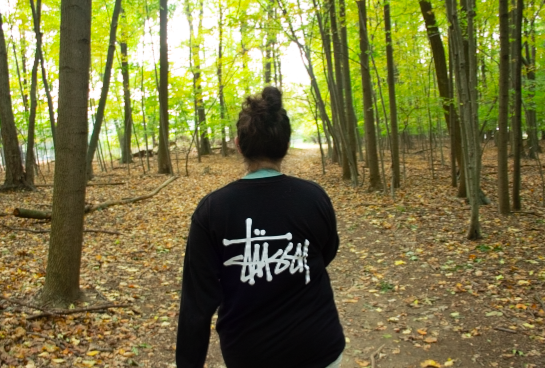
PV senior explains the impact of the inpatient facility on her life and the beginning of attending a treatment center. This is the fifth of an eight part series.
‘The inpatient facility had woken me up’

Editor’s Note: Kayla’s Korner will be a reoccurring column that deals with mental health and teenage issues. This is the fifth of an eight part story.
I was in the inpatient facility for five days. I was smiling my whole discharge day.
When it is your discharge day, you never know what time you will be leaving. So, the day of my discharge, I was just waiting for someone to get there to pick me up.
The girl that I shared a room with the first night that I was friends with left towards the morning. I was sad to see her leave. I gave her a big hug and wished her luck as she would be going to college in the fall.
This happened a few more times throughout the day since many people were leaving the same day I was. I was one of the last people to leave.
As the numbers started dwindling down, I was getting more and more excited to get out of this place.
The inpatient facility had woken me up from everything. It punched me in the gut and made me realize that I needed to take a better hold on myself and on my life. It made me realize that getting help was not that bad at all. It was actually what I really needed.
Going to the inpatient facility was the best decision I had ever made. It sounds cheesy, but it was a weird place that made me realize that I never wanted to go back to it ever again.
Although I was excited to leave, I was also scared.
I knew I was getting better, but I did not know what would happen when I went back to my house, when I went back to my life. Would I start becoming suicidal again? Would I stoop so low again and actually do what I planned to? Would I actually kill myself?
I honestly did not know what I was capable of. I just knew that I would have to take it a day at a time.
Would I get suicidal thoughts again? Honestly, I probably would. But now, I knew that it was okay to have them and I knew how to help distract myself from them.
The inpatient facility also taught me that I was really never alone. There were always people to talk to and patients going through similar situations. It really helped to see that there were others out there.
I have always felt in a bubble at Pascack Valley. No one really talks about mental health, let alone suicide. But at the inpatient facility, I felt like I could talk about what I was truly feeling.
I could never do that home or with my friends. I always thought that they would judge me, but here, there was no reason for judgement.
I was discharged around dinner time. I got the call that my dad was here and as I got up, I looked around. I was in the living room at the time, and I just smiled to all the people around me.
As I stood up, everyone circled around me. They each gave me hugs and wished me luck. I made sure I went to where the younger ones were and said goodbye to each of them. I had really bonded with a few of them.
And that was it. I was let out of the locked doors and back into the real world. My dad and twin sister were waiting for me. They each gave me big hugs and I cannot even really explain what I was feeling.
My dad signed paperwork and I got all my stuff which was in a large, brown paper bag and we walked through the halls of the facility.
When we finally made it to the door, I stopped and looked outside. I had not really been outside for the last five days – it seemed foreign to me. As I stepped outside, I could feel the warm breeze on my face since it had been freezing in the inpatient facility. I had to sleep with three blankets each night, so it being hot outside was so strange.
I did not really talk on the way home as I was just looking out the window. When I was in the ambulance, I could not really see where I was going so it was nice to actually see where I was.
When I made it home, I collapsed on the couch. My dog jumped on me and licked my face a countless amount of times.
It was different while I was home. There were knives and razors that I could use to hurt myself. And I had to keep my door open at all times. For the first few days, I was home, someone had to always be in the room with me.
I hated it, but I just had to deal with it.
A few days after my discharge, I went to the High Focus facility for my evaluation. It took about an hour. I just talked about what brought me to the hospital and my feelings.
Eventually, the clinician that I met with said that I could start at High Focus the following day.
I refused. I wanted to start on the Monday instead of a Friday. Honestly, I was just terrified of going into another place as the new girl. I was scared of meeting new people and just being in a new atmosphere once again.
He agreed that I could start that Monday.
Coming next: Kayla talks about a day in High Focus.
PV senior talks about a day at a treatment center named High Focus after leaving the inpatient facility. This is story six of an eight part series.
‘I had major anxiety going in’

Editor’s Note: Kayla’s Korner will be a reoccurring column that deals with mental health and teenage issues. This is the sixth of an eight part story.
That Monday, I walked into High Focus, terrified. I had major anxiety going in as I knew no one and I did not know what I was headed into.
In High Focus, I started off in partial. Partial is the all day program that they provide. It goes from 8 a.m. to 2:30 p.m. each week day. The first day was all about learning about the activities at High Focus and being introduced to everyone.
I learned that there were two tracks in High Focus. The first track, which was what I was in, were teenagers that did not participate in abusing drugs or alcohol. The second track was the opposite. It was teenagers that abused drugs or alcohol.
Each day, we started off with numbers. This is basically where you write down using a number scale if you had suicidal or thoughts about self-harming. You would also use numbers to describe your emotions. It was based on zero to 10 scale with zero being weak thoughts and emotions and 10 being strong thoughts and emotions.
Following this, we would do open which is group therapy. You sit in a group with your track and talk about what had been going on. I hated this because I do not do well in group situations. It gives me a lot of anxiety and I always feel like the people in the group are judging me.
Despite this, open was actually very beneficial for me. It allowed me to really talk about what I was truly feeling. The people in open are also able to give feedback and help you through situations, which I really utilized.
Following open, we had school sessions. However, since it was the summer, the school portion was not implemented. Instead, we discussed current events and played cards so it was rather boring.
During the school year, though, the school portion would be dedicated to getting your school work done that you would be missing during the day.
Then, it would be time to eat lunch. There was a break room where patients usually ate in. There was a huge vending machine that had ramen noodles, mac and cheese, chips, and candy. I got ramen noodles almost every day and kind of became dependent on them. The days I did not eat ramen, I brought in my lunch.
After lunch, we had two groups left and then we could go home. These groups depended on the day. Some days it would be art therapy, and others, it would be learning about medication or a lesson involving mental health.
The afternoon usually went quickly, though, so I really did not mind going to the groups.
The day would finally end around 2:30 p.m. At the time, you would be able to get your phones back, as you were not allowed to have them in partial.
I went to the partial part of High Focus for around a month. Since I was improving and doing so well, I eventually moved down to the Intensive Outpatient Program, also known as IOP. IOP was the same thing as partial but it was only for three hours and took place after the teenagers in partial left.
So instead of having to wake up at 7 a.m. every day, I would just have to be there around 3 p.m. There was also more people in IOP as not everyone went to partial; some people just go straight to IOP.
In IOP, there was open and other group activities. I did this for a few weeks.
My discharge day came at the beginning of August.
Coming next: Kayla explains her discharge day.
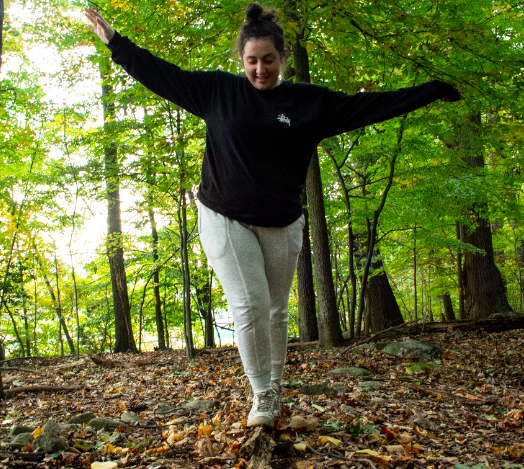
PV senior explains her feelings and emotions in regards to her last day at High Focus, a treatment center. This is the seventh story of an eight part series.
‘I wanted to keep living’

Editor’s Note: Kayla’s Korner will be a reoccurring column that deals with mental health and teenage issues. This is the seventh of an eight part story.
August 7 was the day. It was my discharge day.
It was just a normal day. Since I was now in Intensive Outpatient (IOP), the whole day was only about three hours. It began with open where we all just talked about what was going on in our lives.
Towards the end of open, the clinician that was running the session turned to me and asked me to talk to the group about my plans for after this and what I had learned.
What had I learned here?
The answer was a lot.
I had learned that I was never really alone and that others were going through the exact same thing I was. I learned different coping strategies when I got anxious or depressed. Most importantly, I learned that things can get better.
Before I entered the inpatient facility, I had no hope for myself. I thought nothing could get better and the only solution would be harming myself. But now, on my discharge day, I knew there were good things to come.
I knew I wanted to keep going. I wanted to keep living.
I told the group this, explaining how the inpatient facility and High Focus had really truly helped me.
The group all stared at me and listened. I felt good sharing my thoughts as there were some new people that had just gotten to High Focus and probably just wanted to leave.
I hoped that I would reach them and by speaking from someone who had underwent treatment — if you work hard in recovering, then you would see good results.
Following open, we did another group. I don’t exactly remember it, but I know it went pretty quickly.
The last group session was art therapy. This was my favorite session to do at High Focus. It relaxed me and I thought it was perfect to end everything with.
We were all just coloring and then my discharge ceremony began. My clinition came in and started the ceremony.
One of my friends read a paper that congratulated me. Then, I had to answer some questions about my time at High Focus and what I had learned.
After this, we went around the room to each person. They would speak about me and wish me luck. The friends that I had made would talk longer than others.
It made me really happy.
Next, I received a certificate with my name and the date I completed High Focus. It was attached to a poster where all my friends at High Focus had wrote on with short, sweet paragraphs. Since I was leaving, they were allowed to give me their social media and phone numbers.
Then, it was all over. I hugged all my friends.
And then I left. I would never see that building or some of those people ever again.
Coming next: Kayla explains her life now post the inpatient facility and High Focus.
PV senior discusses her life today and emphasizes the need to reach out for help in her last out of eight stories. She will be continuing another series related to mental health.
‘Life is worth living’

Editor’s Note: Kayla’s Korner will be a reoccurring column that deals with mental health and teenage issues. This is the eighth of an eight part story.
I decided to tell this story at the beginning of the school year. I thought it would be good for myself as well as for others.
Writing has always been one of my passions. And I thought by writing it all down, it would help me heal and express all of my feelings with it. It really helped because I have finally come to terms with everything that has happened to me.
The positive response I have received from these stories has also showed me that it has been helping others. These stories were mostly just for me to get everything out, but seeing that it has been helping others has made me want to continue to tell my story.
I am hoping that by telling this story, it will spread awareness of mental health in general. Mental health is something that should be talked about. It should not be something to be ashamed of.
At first, I would hate to say that I was depressed or even had anxiety. They come with such negative connotation, that I did not even want to admit I had them.
I thought people would judge me and look at me differently.
The opposite happened. I received endless positivity and gratefulness from students at Pascack Valley, PV alumni, parents, and other members of the community.
My mom even got endless messages asking for advice for parents going through the same thing with their children.
I did not know that this could even help anyone. I thought it was just something that I should write down. I am so glad I did, though.
These days, I am doing a lot better. I am currently a senior and I am almost done applying to all of my colleges. I am applying to 13 schools, so I have been rather stressed.
Although I have constant support and such, I still have bad days. A lot of them actually. And that is okay. I am not perfect, I am human, and everyone is going to have bad days.
My bad days still consist of me not wanting to go to school and just stay in my bed and cry.
I get through them, though. I know, now, that life is worth living. I want to see what I have done in a year, in five years, in 50 years.
Since I have finished High Focus, I have started my therapy sessions up again. I, now, see my therapist once a week, sometimes twice. I am now not afraid to tell her how I actually feel.
I still have suicidal thoughts. I get them a lot of the time, actually. After I got out of the inpatient facility, I had none. I did not think about dying ever in High Focus. But since I have gotten out, they have started back up again.
They are not as constant as they used to be, but they still come up. They still scare me.
But I know I control them and they will not get the best of me. When they come, I think of my friends, my family, and what I want to do in my life.
I think about about if I did act on my thoughts, it would hurt others. I think about it like this: I used to think that ending my life would take all the pain away. I would finally be happy if I was dead. I have come to realize that maybe the pain would stop, but it would just be transferred onto someone else. And I would not wish my pain on anyone else.
I have realized that it is okay to not be okay. Just make sure you tell someone that you are not okay. It saved my life.
If you or someone you know is suicidal or needs help, please do not hesitate to call the suicide hotline: 1-800-273-8255.
If you want to contact me personally, you can contact me through email: [email protected].
Coming next: Kayla’s Korner will be continuing with weekly articles. Next week will consist of her talking about her coping strategies and how she uses them.

